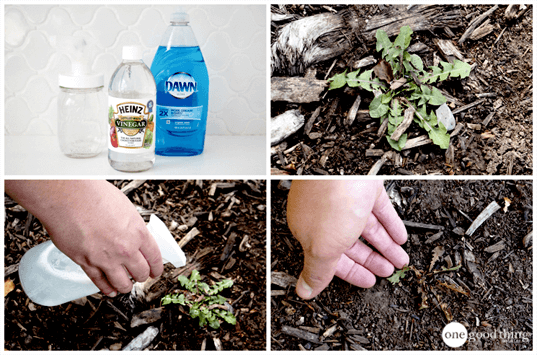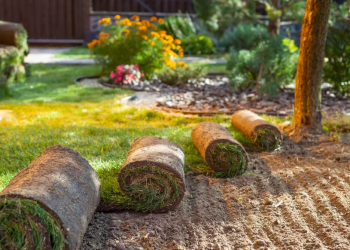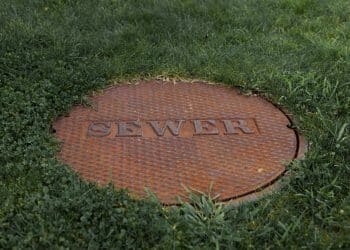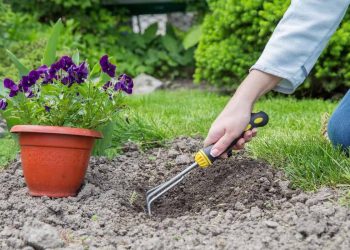Table of Contents
Weeds are the undesirable plants referred to as out of place plants. They interfere with land and water resources utilization, and in turn, affect human welfare. They compete with the beneficial and desired vegetation in cropped areas and also pose great problems in non-cropped areas. In the management of all land and water resources, weeds are considered essential factors because they cause more loss than any other pest compounding to around 45% of a total loss. To reduce the losses, weed killers are used, which are chemical-based liquids specifically engineered to target different types of weed. Weed killers are of different types depending upon the nature of the weeds they kill. In this article, we will discuss how to use weed killers effectively.
Types of weed killers:
Before jumping directly on how to use weed killers, a little information about them is necessary. If we talk about using the weed killers depending on how they are used, then most of the chemical weed killers can be divided into Non-selective and Selective Weed Killers. It is essential to know which kind of weed killer is suitable for the purpose and how to use the weed killers–
Non-Selective Weed killers:
- Contact weed killers – Contact weed killers specifically kill the parts of the plant they contact. For weeds having broad leaves, they will kill the leafy part of the plants that are above the ground. They do not directly kill the parts, such as roots, bulbs, tubers, or rhizomes, which are located inside the ground. They are a popular choice because of their quick-acting nature. They start working within ten minutes of getting applied to the target plant. The leaves start turning yellow and then brown, and the weeds are killed in a few days only. Once the applied herbicide gets dried from the leaves of weeds, new plantations can be initiated, which can be even 24 hours for some types of plants. These types of weed killers are the best choice in case of the weeds growing annually and in the case of perennial weeds as well.
- Systemic Weed Killers – Systemic weed killers are those which get absorbed by the plants through the leaves or stem and accumulates inside the plant body. They kill the entire plant along with the roots, although they have a slower effect than the Contact weed killers. They are effective in breaking down the weed and kill from the inside out. This is the property that makes Systemic Weed Killers suitable for controlling perennial as well as weeds, which are difficult to control. It takes time for the weed killer to penetrate through the leaves, and effectiveness may decrease because of the rain in the early hours of application. The weeds should be left for a week completely undisturbed, and then the initial effects can be observed in 7 – 10 days with the complete weed control in between 3rd to 4th weeks.
Selective Weed Killers:
Some weed killers are selective. They are the most common type of weed killers. They are generally broadleaf weed killers, which affect only the plants having broad leaves, and hence they are safe to be used in lawns as they do not kill the grass. However, some selective weed killers can be harmful to certain grasses so, you must check it at the point of purchase.
Conditions for using lawn weed killer:
There are a few conditions to use weed killers to achieve the desired result. Weed killers should be sprayed when sufficient moisture is available in the soil, and it is less likely to rain within 6 hours of application. Weed killers must be applied on dry grasses to prevent it from getting diluted, and frost and freezing conditions should be avoided. Weed killers (Herbicides) must be absorbed first into the weed leaves, and small weeds require lesser chemicals. Therefore, you should wait at least 2-3 days after mowing, and similarly, mowing should not be done for at least some days after spraying has been done, allowing more chemicals to percolate the stem downwards to the root.
How to use weed killers in lawns and gardens:
In this section, we will discuss how to use best weed killers in smaller or mid-sized lawns or a home garden. In gardens of mid-size to large-size where plenty of weeds are there that require controlling, it is better to use a concentrate weed killer, which will not only save you some bucks but will also sweep a larger area in a faster manner. Some of the concentrate weed killers are Resolva-24-H, Resolva-lawn, Resolva-XtraTough.
First of all, the area to spray the weed killer has to be identified and make sure the weeds are not very close to any plant; otherwise, these weed killers will kill all the plants coming in contact. Use a sprayer with a smaller nozzle to control the area of spray. Spraying should be done on a dry, sunny day when there is no rain expected in the coming 24 hours. Disperse the contents by shaking the bottle first.
Now in the sprayer or the watering can, which is filled with water, mix the appropriate amount of the concentrate weed killer. Spray the weed killer on the unwanted weeds that need to be killed. However, keep in that water does not run-off onto the plants that are intended to be kept. Weedkiller will get carried away from the surface of the leaf to the stem and finally into the root through the plant sap. Then mow out the weeds once they die. The impact of the weed killer will depend on its nature. Some are very fast, whereas some of them take 6-7 days to show their effects.
Methods of delivering weed killers in the larger area:
In this part, we will discuss how to deliver weed killers in a larger area. Method of delivery directly impacts the outcome; therefore, to know how to use weed killers effectively, you should know about delivery methods and apparatus:
Sprayer – Sprayers are the most common apparatus which are used for applying herbicides in largescale farming. The mechanized sprayers are mainly used in broadscale farming. The sprayer has the nozzles being the most critical components which distribute the herbicide in too many smaller droplets that are projected to the target with the help of the air. The effectiveness of spraying is determined mainly by the nozzle of the sprayer. The rest of the components position the nozzles intact and maintain a continuous supply of the herbicides at the correct amount of pressure. It is essential to select the correct nozzle size for effective spraying.
Misters – They are also useful for superior distribution but is not a precise method of applying weed killers quickly to the larger areas. They are reliant on wind for the drifting of weed killers. The swath width is directly dependent on the wind speed. It decreases when the wind is lighter or in case the speed of spraying is high which can ultimately cause overdosing and waste of chemical, whereas when the wind is actual, swath width increases, in turn, reducing the rate of chemical application following the risk of damage to unwanted plants from spray drift.
Wipers – Wipers are also called blanket wipers in which a vertical strip of material is attached to a frame which is in a horizontal configuration. This vertical strip, which is known as the blanket, is the wiping surface that makes contact with the targeted weeds directly. A non-selective herbicide is generally used with successful weed control dependent on the height differential between crop and weed. The herbicide is applied selectively to the plants without damaging the pasture legumes or the native seedlings of revegetation areas. The right time to wipe weeds in crops is between September to early October when the flowering starts in the weeds, and they are 20–30cm taller than the crop or pasture plants.
How to use biological weed killers –
Biological control of weeds deliberately uses natural enemies of the weeds to reduce the density of a particular weed to a tolerable level. The main objective of this type is the reduction of weeds, not the complete elimination. Beneficial insects and some nematodes feed directly on the weed roots causing an injury that allows bacteria and fungi to penetrate and damage the weeds. Two beetles, namely leaf beetles and Leaf-mining beetles, Flea beetle, Scale insect, Common carp are some of the biological weed killers. Biological weed killers are often hosted specific and can be applied using conventional spray equipment at a time when the weed is at a susceptible stage.
Safety measures to be followed while using weed killers-
- The container of herbicide should be checked for manufacturing and expiry.
- You should read the instructions carefully before applying it to your garden.
- You must wear required safety equipment like goggles to protect your eyes.
- Do not use any weed killer more than the required and recommended dosage.
- Weedkiller should be adequately mixed in water in the recommended proportion.
- Spillover of the weed killer should be prevented.
- You should wash your hand and take a bath after spraying the weed killers.
- Weed killers should be kept away from the reach of the children.








